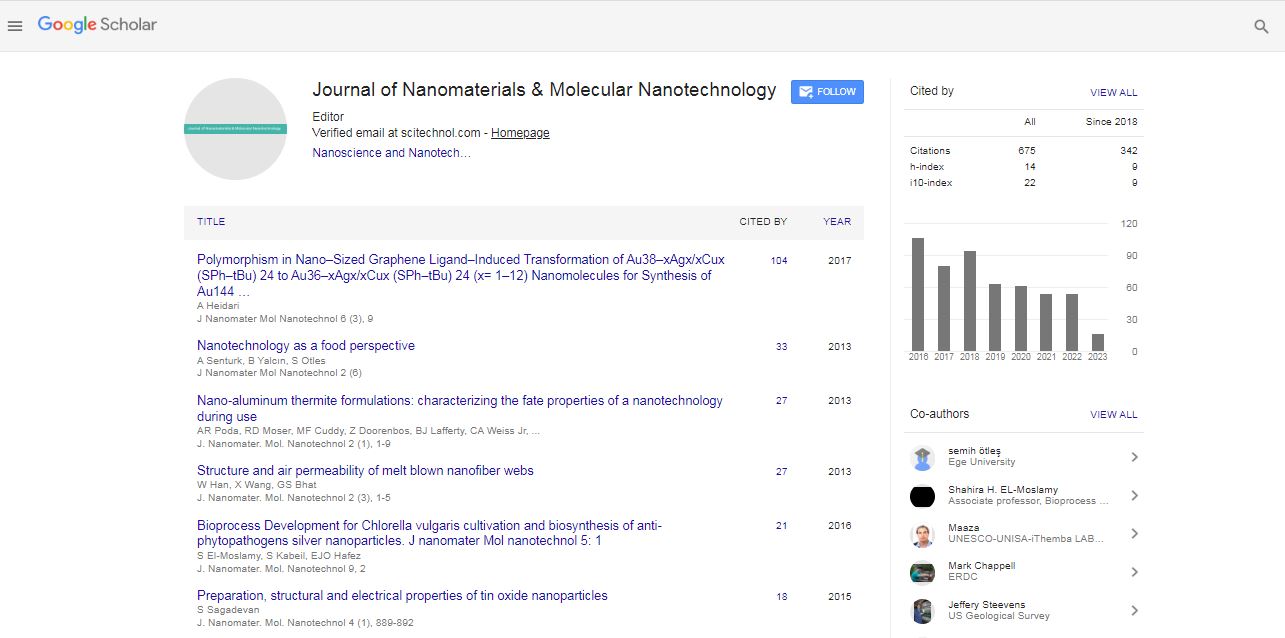Polymer-ceramic composites modified with bovine collagen for bone tissue regeneration
*Bozena Tyliszczak, Agnieszka Sobczak-Kupiec, Dagmara Slota, Wioletta Florkiewicz, Karina Pietak, Mateusz Dylag, Magdalena Glab,
Anna Drabczyk, Sonia Kudlacik-Kramarczyk and Agnieszka Tomala
Cracow University of Technology, Poland
: J Nanomater Mol Nanotechnol
Abstract
Statement of the Problem: Along with the constantly observed civilization development, the medical conditions known also as the 21st century diseases are becoming a growing problem. Among these conditions, the skeletal system diseases constitute particularly significant aspect. Thus it is very important to perform investigations on the development of new, innovative bioactive biomaterials which may support bone defect treatment and favor bone tissue regeneration. Methodology & Theoretical Orientation: The main base of the developed biomaterial is a polymer matrix showing excellent mechanical properties giving at the same time appropriate elasticity. As a bioactive component, hydroxyapatite has been used to provide adequate osteointegration of the final material. Moreover, a bovine collagen has also been used. This protein was selected due to its high biological significance and biocompatibility which, in turn, result in supporting cell adhesion and proliferation by collagen modified composite. Findings: Based on the spectroscopic analysis performed, the occurrence of the absorption bands characteristic for applied modifying agent, i.e. collagen, has been verified. Furthermore, it was demonstrated that all analyzed composite materials were characterized by sorption capability in simulated physiological liquids. Next, during the incubation of tested composites in simulated physiological liquids, i.e. during 14-day period, any rapid changes in pH values of incubation media have not been observed. All composite materials were characterized by similar surface roughness which was a result of the presence of the ceramic phase (i.e. hydroxyapatite) in all tested materials. Conclusion & Significance: Due to such advantages of developed polymer-ceramic composite materials modified additionally with collagen as their simple and quick synthesis, biological and physicochemical properties as well as the possibility of the preparation of their sizes and shapes depending on the applied reaction vessel it may be concluded that developed biomaterials exhibited a great application potential and should be investigated using more advanced experiments. Acknowledgements: The „Multifunctional biologically active composites for applications in bone regenerative medicine” project is carried out within the TEAM-NET programme of the Foundation for Polish Science financed by the European Union under the European Regional Development Fund.
Research Publications:
1. Lara-Ochoa S, Ortega-Lara W, Guerrero Beltrán C.E (2021) Hydroxyapatite Nanoparticles in Drug Delivery: Phys. Applications. Pharmaceutics 13:1642.
2. Fraile-Martínez O, García-Montero C, Coca A, Álvarez-Mon M.A Monserrat J. Gómez-Lahoz A.M Coca S, Álvarez-Mon M, Acero J, Bujan J (2021) Applications of Polymeric Composites in Bone Tissue Engineering and Jawbone Regeneration. Polymers 13:3429.
3. Kien P.T, Quan T.N, Tuyet Anh L.H (2021) Coating Characteristic of Hydroxyapatite on Titanium Substrates via Hydrothermal Treatment. Coatings 11:1226.
4. Liu F, Kang H, Liu Z, Jin S, Yan G, Sun Y, Li F, Zhan H, Gu Y (2021) 3D Printed Multi-Functional Scaffolds Based on Poly(ε-Caprolactone) and Hydroxyapatite Composites. Nanomaterials 11:2456.
5. RodzeÅ? K, McIvor M.J, Sharma P.K, Acheson J.G, McIlhagger A, Mokhtari M, McFerran A, Ward J, Meenan B.J, Boyd A.R (2021) The Surface Characterization of Fused Filament Fabricated (FFF) 3D Printed PEEK/Hydroxyapatite Composites. Polymers 13:3117.
Biography
Bozena Tyliszczak has an expertise in developing various biomaterials designed for biomedical purposes. The research topics she undertakes cover such scientific areas as materials engineering and nanotechnology. Her main attention is focused on the development of innovative controlled drug delivery systems such as wound dressing materials accelerating wound healing processes, and enabling targeted delivery of active substance directly to the affected site. Targeted delivery is particularly significant in the case of anticancer therapy where conventional drug application may cause various side effects and, importantly, reduce the effectiveness of treatment.




